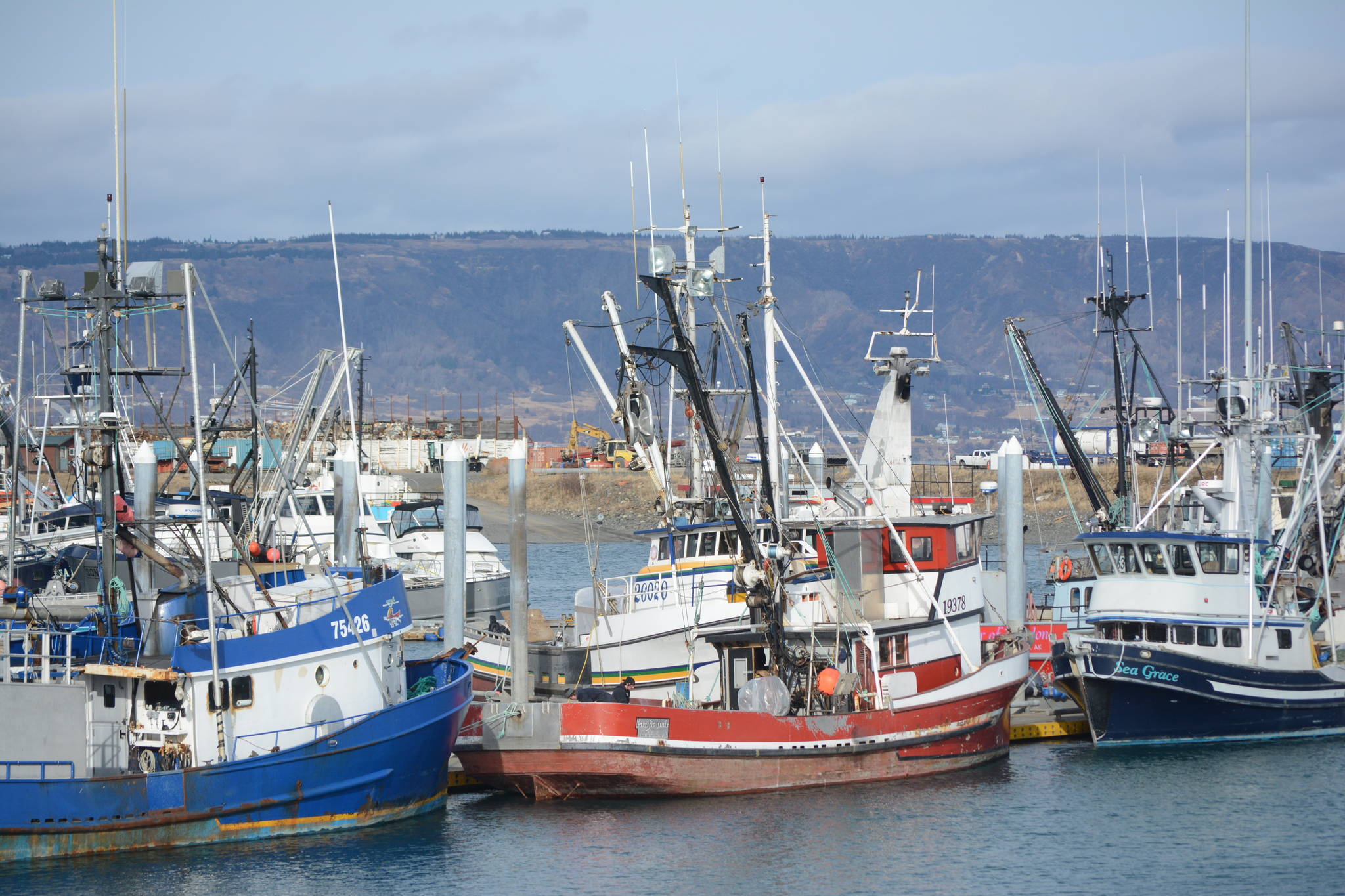As Alaska is experiencing unusual salmon behaviors and failed runs, a group of international scientists are halfway through a long over-due winter voyage in the Gulf of Alaska to try to solve some of the fundamental mysteries of which salmon survive, and why.
According to the National Oceanic and Atmospheric Association newsletter, perhaps the most critical, but least known, part of the salmon life cycle is the few years the fish spend on the high seas, gaining energy to return to their home rivers and spawn. This is where most of the salmon that stream out of Northwest and Alaska rivers each year disappear, most never to be seen again. Now the science team is headed into the remote Gulf of Alaska to try to find out which fish survive, and why.
“What we most need to know about salmon, we mostly don’t know,” said Richard “Dick” Beamish, a longtime salmon researcher in Canada who, with Russian colleagues, launched plans for the research expedition as a centerpiece of the International Year of the Salmon in 2019. He raised about $1 million to fund the voyage, and NOAA Fisheries contributed as well.
“Nothing like this has ever been done before to my knowledge, and I’ve been doing this for 50 years,” Beamish said. “I believe that we will make discoveries that will change the way we think of salmon and do salmon research.”
NOAA Fisheries has three scientists on board the survey, which includes top salmon researchers from Russia, Korea, Japan, and Canada. Scientists believe that Pacific Rim salmon, whether from Alaska, the west coast of the United States, or the east coast of Asia, all spend time in the Gulf of Alaska during their years at sea. The trip is already paying dividends, according to the Victoria Times Colonist. They report that onboard DNA analysis of salmon — the first time such complex molecular research has been performed at sea — has discovered that B.C. and Puget Sound coho are wintering in the Gulf of Alaska.
The proof that it is possible to perform such analysis shipboard, and with only about $10,000 worth of compact equipment, is considered game-changing by scientists on the chartered Russian trawler Professor Kaganovsky and its crew in the Gulf.
“What is exciting is that this is an international expedition and there are five countries involved. And every single one of those countries is interested in knowing where their fish are,” said Kristi Miller, who works in molecular genetics at Fisheries and Oceans Canada’s Pacific Biological Station in Nanaimo. “This is the largest scale field application that I know of for a molecular technology that is this advanced.”
Scientists had not expected to see coho, Miller said from shore, where she is keeping up with the research. “Coho doesn’t spend that long in the ocean and everyone kind of thought that coho stays more coastal and doesn’t go that far offshore. And they’ve actually caught more coho than they were expecting.”
Fisheries biologists Charlie Waters and Gerard Foley from the Alaska Fisheries Science Center are collecting samples for several studies to learn more about salmon condition and diet. In particular, they want to learn more about what pink salmon are eating and whether they are in competition with sockeye, Chinook, and coho for prey resources, something of interest to hatchery opponents. All of these salmon species support important commercial, recreational, and subsistence fisheries in Alaska.
“We have a vested interest in knowing what’s going on during the winter months,” said Foley. “It is a critical, critical time in the life history of these fish.”
Scientists have long suspected that the fate of salmon migrating into the ocean is sealed during their first year at sea. The fish that grow large enough, fast enough to elude predators and make it through the first winter are the fish that will return to rivers to spawn — and to be caught in fishing nets. For the first time, the scientists will be able to test that theory, using clues like the tiny bones in the ears of fish, known as otoliths, that reflect each fish’s growth.
Roughly 99 of every 100 salmon that leave rivers for the ocean never return. The team wants to know what distinguishes those fish from the rare salmon that make it back alive.
“This is the time of year when we think most of the mortality is occurring, so this is when we want to be there to understand the fundamental mechanisms that regulate the production of salmon,” Beamish said. The better they understand the most influential factor affecting fish, he said, the closer they will be to providing more accurate forecasts of salmon returns to west coast rivers.
That, in turn, will help fisheries managers, fishermen, and others effectively manage salmon in a changing ecosystem, Beamish said.
Researchers also believe that different salmon stocks, such as those from rivers including the Snake and Columbia, migrate through certain parts of the Gulf of Alaska, capitalizing on the food available in different areas. The carrying capacity of those areas will also help determine how many fish return to the rivers.
“We’ve never been able to test that before,” Beamish said. “Now we have a chance to be there and see it happening in real time.”
Cristy Fry can be reached at realist468@gmail.com



